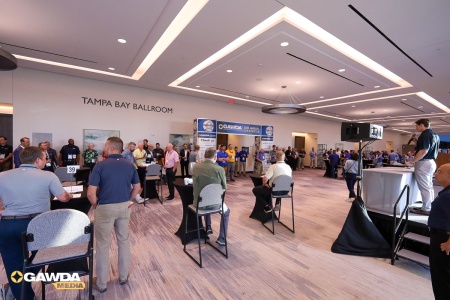
By Jennifer Briggs
When a company sells to an Employee Stock Ownership Plan (ESOP) or a group starts a co-op, a common question is, how will this new organization be different for the employees as owners?
There is the obvious and critical starting point that the employees need to understand their benefit and recognize how an ESOP or co-op works from their own financial/beneficial perspective.
But, then what? A big win with employee ownership is the shared profit motive. No longer is it a single owner, small group or set of anonymous shareholders who benefit. Now, it is the trust/employees who do. Since people are still doing their jobs just like they did before, what does this “different” look like for them now?
I believe the crux of building the awareness among employees is doing deeper thinking, along with conducting some specific tactical actions and meaningful discussions. Often people create celebrations and parties to build community around the ESOP, and that’s great. We also must focus on how we can change the work-behavior connection so that employees and companies really get the most from each other in ESOP environments.
Some starting points include the following tactics and approaches. These can help managers enhance how employees view their roles, as well as the contributions they are making, for the good of the company and themselves by adopting a bit of a deeper mindset.
Management
If managers have not been digging deep on their own broad-business acumen, they need to do so now. Managers are the critical connectors between the day-to-day and the broader business plan. They serve the role in connecting the work of each person on their team to the company plan. They help serve the business by ensuring that daily actions of the employees ensure real value to the business.
Goal Setting
Having a great goal-setting discussion that includes the “why” behind individual goals is imperative.
How does this or that goal connect to what the company needs? That’s an important understanding. Don’t let goal-setting become a mechanical exercise. Managers can help it become a motivational exercise that connects individual effort to company impact.
Participative Tactics
Managers can open their budgets and actuals and explain why they are over or under budget or revenue, as well as get employees involved in explaining gaps. Then, they can take this discussion to the next level and have employees anticipate the future and reforecast the numbers based on their increased knowledge.
Another option is that managers can create problem-solving and opportunity-finding groups. They should do this using cross-functional agile methods of project management, with a focus of always keeping the consumer in mind. Be careful not to let budgets build silos. The employee-shareholder/stakeholder-consumer connection is critical.
Leadership
Leadership sets the model for organizational temperament, so a driven, open, humble approach is great. Employee ownership doesn’t mean leaders lead less. In actuality, they need to lead more since they are acutely aware of the talent inside the company and don’t want any of it to go to waste.
Influencer Meetings
Town halls, all-hands or all-staff meetings are quite common in these scenarios. That’s when you can take the discussion to another level. It’s not just reporting the state of the business, it’s picking critical business issues and asking employees for their thoughts.
These discussions should not be set up as brainstorming meetings. Leaders are asking for contributions to help everyone in the company challenge current perceptions, see the challenges of the marketplace and contribute ideas. Such talks typically are structured around leveraging the company’s employees as a source of business intelligence. You have a bank of wisdom among them, and the idea is, why not use it?
Decision Shifts
For all leaders, it is important that people understand how decisions are made. It’s important for you to help people understand situational attributes that lead to certain decision approaches.
You can help employees understand the data and other business intelligence that lead to decisions. Build value and respect for specialization while also creating room for grassroots decisions. Decide where to shift decisions, cut red tape and empower teams. Decide between deciding and recommending. If you are really into it, design a decision chart to help build understanding, and then use this as a discussion tool to determine when a shift in control is appropriate.
Economic Insights
Share broader economic insights. The marketplace is always competitive. Help the employees understand competitive forces. Business isn’t all about rewards; there are risks. Entrepreneurship is tough. The marketplace changes, and it can happen fast. Help everyone understand so they are well prepared to adapt their own jobs if it becomes necessary. Create the collective force to build a world-class business.
Contributors
Each employee contributes value to the company, but how does this change with employee ownership? Employee owners know that the collective future wealth is built on the integrated impact. The importance of our work is aligned with the needs of the business and our behaviors unified to the values/purpose supports the success of the company.
Owning Individual Performance
Performance management is critical to making sure individual plans and contribution levels align with what the company needs. It’s this way in any company, but in employee-owned companies there is often the privilege of more transparency, better management and the idea that if the company succeeds, everyone succeeds.
Owners don’t need managers. They need leaders who are guiding, supporting, teaching and coaching. The manager helps align work with the company plan and helps up the ante on work contributions employees make to ensure the work adds value.
This is the opposite of laissez-faire management because it is active, involved (in a good way) and helpful. Each person can be reviewing performance, getting advice on how to improve and proposing a self-review and a work plan for the future. Managers are partners who help people contribute the best work.
Converting Values to Norms
Most companies have a list of values, but each employee can work to unify how the values are lived. For example, maybe the company has a value of working like an owner. What does that mean? What does that look like in the daily work context for our work?
Employees can get together and make agreements on what normal behaviors and actions will be. More tenured employees can help teach new coworkers and everyone can hold themselves accountable to the agreements. In some workplaces, people wait for leadership and management to define what being a good employee means, but employee owners can take it a step above and develop themselves and their co-workers as great organizational citizens. Employee owners can help design the aspirational culture and achieve it.
Moving to employee ownership isn’t like turning on a light switch. Most companies will be at different starting points, so how each one begins to fold in different aspects of employee ownership should be different. The key is having an understanding that now, employees don’t merely rent their labor to the company, they also own the outcomes of great work.
The switch starts with intention. Regardless of where it starts, it will be positively powerful.








